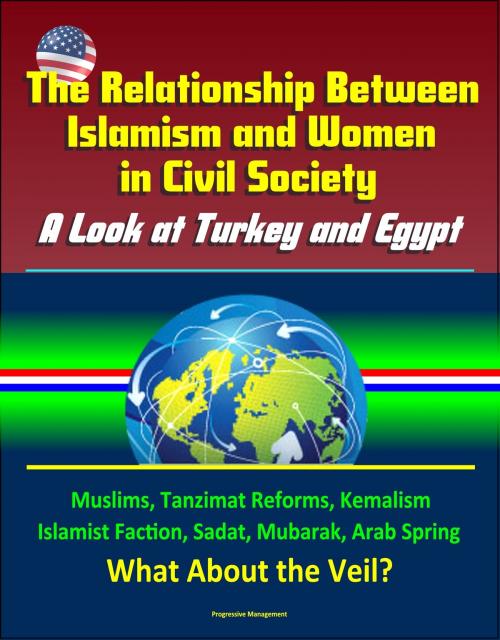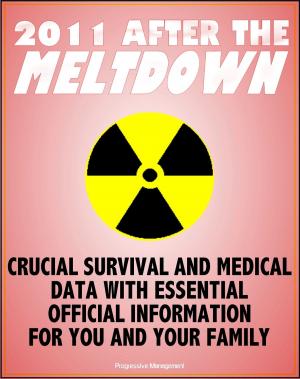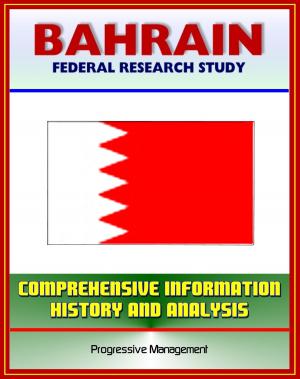The Relationship Between Islamism and Women in Civil Society: A Look at Turkey and Egypt - Muslims, Tanzimat Reforms, Kemalism, Islamist Faction, Sadat, Mubarak, Arab Spring, What About the Veil?
Nonfiction, History, Middle East, Social & Cultural Studies, Political Science| Author: | Progressive Management | ISBN: | 9781370970100 |
| Publisher: | Progressive Management | Publication: | November 22, 2016 |
| Imprint: | Smashwords Edition | Language: | English |
| Author: | Progressive Management |
| ISBN: | 9781370970100 |
| Publisher: | Progressive Management |
| Publication: | November 22, 2016 |
| Imprint: | Smashwords Edition |
| Language: | English |
This excellent report has been professionally converted for accurate flowing-text e-book format reproduction. In the lead up to the 2001 invasion of Afghanistan, the U.S. government emphasized how the military intervention would liberate Afghani women from the Taliban, echoing an old colonial discourse that Muslim women need saving. This study reviews the effects of Islamism, especially when it influences political decisions, on women. In particular, the study focuses on whether there is a correlation between rising Islamism and women in civil society in Turkey and Egypt through the variables of political, educational, and employment opportunities.
This study addresses how the role of women in civil society is currently changing in Turkey and Egypt. Chapter II focuses on Turkey. Starting in the late Ottoman period and ending with the rise of the Justice and Development Party (AKP), the chapter reviews how leaders used the position of women to further their own agendas.
The chapter also reviews how a woman's political, educational, and employment status changed depending on which government was in power. Chapter III focuses on Egypt. The early twentieth century's Islamic feminist movement is discussed, as well as how the impact of authoritarian governments affected political freedoms and economic opportunities for women. In Chapter IV, this study reviews primary data for Egypt and Turkey over the last 30 years. It illustrates women's roles in civil society based on political participation, educational enrollment, and overall employment. The study reviews Islamist political position and looks for a correlation between Islamism and the role of women. Chapter IV also touches on other possible factors that relate to women's position in society. Chapter V concludes the study with a discussion of possible correlations between women's place in civil society and political Islamism and possible policy implications.
CHAPTER I - INTRODUCTION * A. RESEARCH QUESTION * B. SIGNIFICANCE OF THE RESEARCH QUESTION * C. LITERATURE REVIEW * D. EXPLANATIONS AND HYPOTHESES * E. RESEARCH DESIGN * F. STUDY OVERVIEW * CHAPTER II - WOMEN IN TURKEY: A MIXED RECORD * A. WESTERN INFLUENCE AND THE TANZIMAT REFORMS * B. 1908-1918: SECOND CONSTITUTIONAL PERIOD * 1. Women in Civil Society - Education, Politics, and Employment * 2. Marriage and Family Law Reform * C. 1923: KEMALISM * 1. New Opportunities * 2. Marriage and Family Law Reform * D. AFTER KEMAL: POLITICAL INSTABILITY AND MANDATED SECULARISM * E. RISE OF THE JUSTICE AND DEVELOPMENT PARTY * 1. Lifting a Secular Ban * 2. Family Life under the AK Party * F. CONCLUSION * CHAPTER III - EGYPT: RELIGIOUS FEMINISM AND STRUGGLES WITH GOVERNMENTS AND ISLAMISTS . * A. WOMEN'S ROLES THROUGH INDEPENDENCE * 1. Early Reformers * 2. The Nationalist Movement * 3. Politics, Freedom of Expression, and Education * 4. Capitalism and Society * B. THE RISE OF ISLAMIC FEMINISM: POST-INDEPENDENCE, 1952 REVOLUTION, AND PRESIDENT NASSER * 1. Competing factions * a. The Secular Faction and the EFU * b. The Islamist Faction and the MWA * 2. Political Opportunities * 3. Employment and Education * 4. Societal Pressures and Family Law * C. PRESIDENTS SADAT AND MUBARAK * 1. Education and Employment * 2. Political Opportunities, Family Law, and Societal Position * D. SINCE THE ARAB SPRING IN 2011 * E. CONCLUSION * CHAPTER IV - IMPORTANCE OF ISLAMISM AND A WOMAN'S ROLE: STATISTICS AND PUBLIC OPINION * A. MEASURING ISLAMISM * 1. Elections * 2. Public Opinion * B. WOMEN'S ROLE IN CIVIL SOCIETY * 1. Political Opportunity and Parliamentary Representation * 2. Education: Literacy and Enrollment * 3. Women in the Workforce * 4. What About the Veil? * C. CORRELATION VERSUS CAUSATION * D. CONCLUSION * CHAPTER V - CONCLUSION
This excellent report has been professionally converted for accurate flowing-text e-book format reproduction. In the lead up to the 2001 invasion of Afghanistan, the U.S. government emphasized how the military intervention would liberate Afghani women from the Taliban, echoing an old colonial discourse that Muslim women need saving. This study reviews the effects of Islamism, especially when it influences political decisions, on women. In particular, the study focuses on whether there is a correlation between rising Islamism and women in civil society in Turkey and Egypt through the variables of political, educational, and employment opportunities.
This study addresses how the role of women in civil society is currently changing in Turkey and Egypt. Chapter II focuses on Turkey. Starting in the late Ottoman period and ending with the rise of the Justice and Development Party (AKP), the chapter reviews how leaders used the position of women to further their own agendas.
The chapter also reviews how a woman's political, educational, and employment status changed depending on which government was in power. Chapter III focuses on Egypt. The early twentieth century's Islamic feminist movement is discussed, as well as how the impact of authoritarian governments affected political freedoms and economic opportunities for women. In Chapter IV, this study reviews primary data for Egypt and Turkey over the last 30 years. It illustrates women's roles in civil society based on political participation, educational enrollment, and overall employment. The study reviews Islamist political position and looks for a correlation between Islamism and the role of women. Chapter IV also touches on other possible factors that relate to women's position in society. Chapter V concludes the study with a discussion of possible correlations between women's place in civil society and political Islamism and possible policy implications.
CHAPTER I - INTRODUCTION * A. RESEARCH QUESTION * B. SIGNIFICANCE OF THE RESEARCH QUESTION * C. LITERATURE REVIEW * D. EXPLANATIONS AND HYPOTHESES * E. RESEARCH DESIGN * F. STUDY OVERVIEW * CHAPTER II - WOMEN IN TURKEY: A MIXED RECORD * A. WESTERN INFLUENCE AND THE TANZIMAT REFORMS * B. 1908-1918: SECOND CONSTITUTIONAL PERIOD * 1. Women in Civil Society - Education, Politics, and Employment * 2. Marriage and Family Law Reform * C. 1923: KEMALISM * 1. New Opportunities * 2. Marriage and Family Law Reform * D. AFTER KEMAL: POLITICAL INSTABILITY AND MANDATED SECULARISM * E. RISE OF THE JUSTICE AND DEVELOPMENT PARTY * 1. Lifting a Secular Ban * 2. Family Life under the AK Party * F. CONCLUSION * CHAPTER III - EGYPT: RELIGIOUS FEMINISM AND STRUGGLES WITH GOVERNMENTS AND ISLAMISTS . * A. WOMEN'S ROLES THROUGH INDEPENDENCE * 1. Early Reformers * 2. The Nationalist Movement * 3. Politics, Freedom of Expression, and Education * 4. Capitalism and Society * B. THE RISE OF ISLAMIC FEMINISM: POST-INDEPENDENCE, 1952 REVOLUTION, AND PRESIDENT NASSER * 1. Competing factions * a. The Secular Faction and the EFU * b. The Islamist Faction and the MWA * 2. Political Opportunities * 3. Employment and Education * 4. Societal Pressures and Family Law * C. PRESIDENTS SADAT AND MUBARAK * 1. Education and Employment * 2. Political Opportunities, Family Law, and Societal Position * D. SINCE THE ARAB SPRING IN 2011 * E. CONCLUSION * CHAPTER IV - IMPORTANCE OF ISLAMISM AND A WOMAN'S ROLE: STATISTICS AND PUBLIC OPINION * A. MEASURING ISLAMISM * 1. Elections * 2. Public Opinion * B. WOMEN'S ROLE IN CIVIL SOCIETY * 1. Political Opportunity and Parliamentary Representation * 2. Education: Literacy and Enrollment * 3. Women in the Workforce * 4. What About the Veil? * C. CORRELATION VERSUS CAUSATION * D. CONCLUSION * CHAPTER V - CONCLUSION















